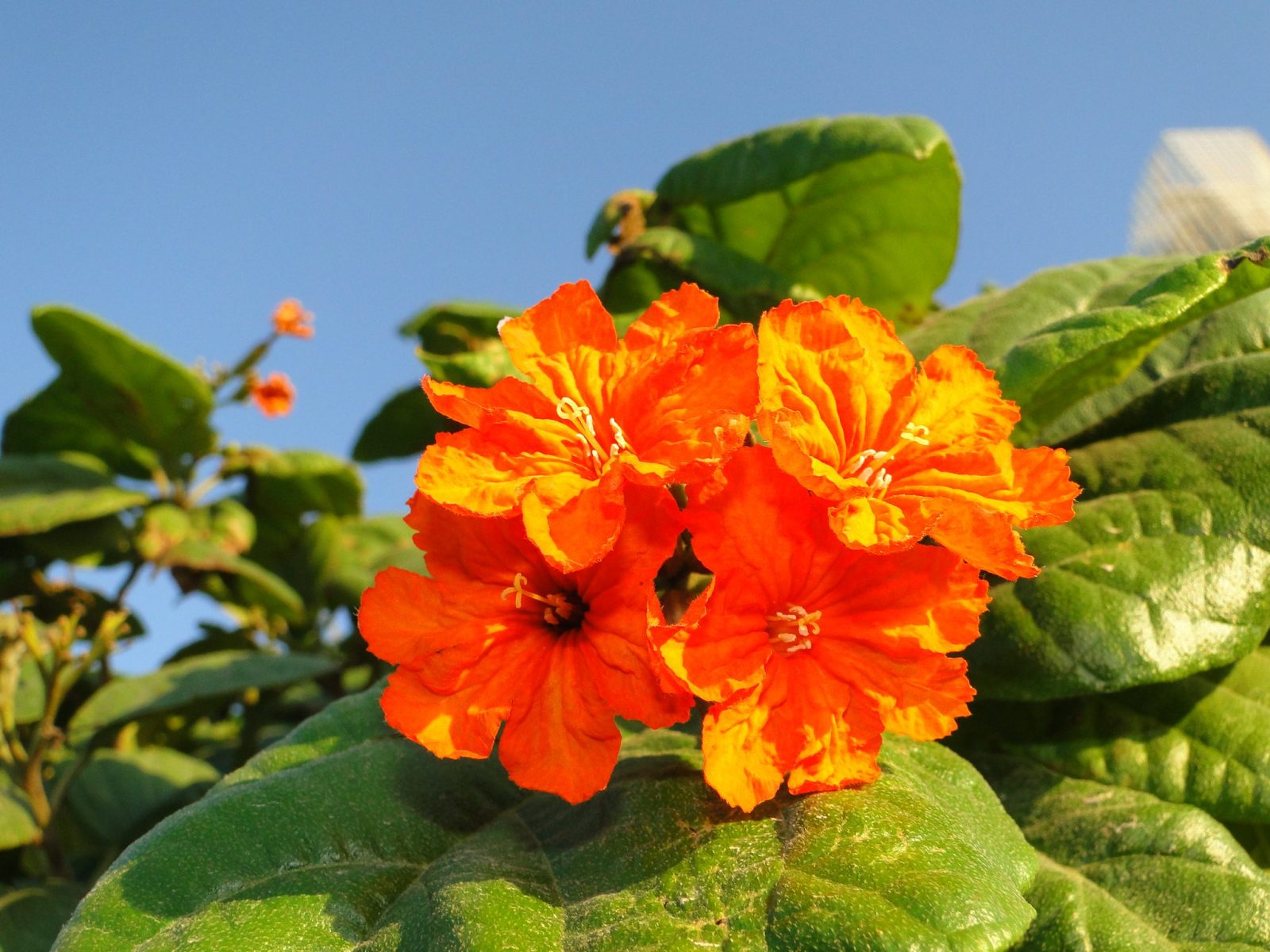Description
Cordia sebestena plant , commonly known as the Geiger tree, Orange Geiger tree, or Sebesten plum, is a flowering tree native to tropical regions of the Americas, including Florida, the Caribbean, and Central America. Here are some key features and characteristics of Cordia sebestena:
- Appearance: Cordia sebestena PLANT is a small to medium-sized evergreen tree that typically grows to heights of 4 to 10 meters (13 to 33 feet) tall, though it can sometimes reach heights of up to 15 meters (49 feet). It has a rounded canopy and a short trunk with rough, fissured bark. The leaves are leathery, ovate to elliptical in shape, and glossy dark green in color.
- Flowers: One of the most striking features of Cordia sebestena is its showy, trumpet-shaped flowers. The flowers are bright orange to red-orange in color and appear in terminal clusters at the ends of the branches. They are rich in nectar and attract bees, butterflies, and hummingbirds.
- Blooming Period: Cordia sebestena typically blooms from late spring to early fall, depending on the climate and growing conditions. The flowers are followed by small, round fruits that are green when immature and turn yellow-orange when ripe. The fruits are not typically ornamental and may be messy if they fall from the tree.
- Habitat: Cordia sebestena is well-adapted to a variety of tropical and subtropical habitats, including coastal areas, dunes, and disturbed areas. It is tolerant of salt spray and can withstand coastal conditions, making it suitable for planting in seaside gardens.
- Cultural Uses: Cordia sebestena is cultivated as an ornamental tree in tropical and subtropical regions around the world. It is valued for its attractive foliage, showy flowers, and tolerance of hot and dry conditions. It can be used as a specimen tree, shade tree, or street tree in gardens, parks, and urban landscapes.
- Growing Conditions: Cordia sebestena thrives in full sun to partial shade and prefers well-drained soil. It is relatively drought-tolerant once established but benefits from regular watering, especially during periods of dry weather. It can be grown in a variety of soil types, including sandy, loamy, or clay soils.
- Propagation: Cordia sebestena can be propagated from seeds or stem cuttings. Seeds should be collected from ripe fruits and sown in pots or directly in the garden. Stem cuttings taken from healthy, mature branches can be rooted in moist potting mix to produce new plants.
Overall, Cordia sebestena is a beautiful and versatile tree that adds color and interest to tropical and subtropical landscapes with its vibrant flowers and glossy foliage. It is relatively low-maintenance once established and is well-suited to coastal environments.
Reasons to buy from Plantssouq
– Fast Delivery
– Whatsapp Us On :0566670322 Dubai
- – Support 24/7 :
* Phone/whatsup:0566670322
* Email : [email protected]






Reviews
There are no reviews yet.